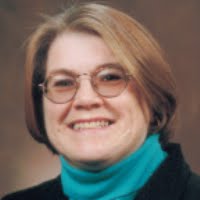I have been busy checking out more ruins of Native Americans. I'm very impressed by the knowledge and use of resources way back when. I remember when I was touring Egypt, and couldn't believe the famous structures which were erected thousands of years ago. The knowledge existed
thousands of years ago. I remember our guide (our own Egyptologist) talking about the burning (48BC) of the famed library in Alexandria. This library's mission was to collect and store all of the knowledge of the world. If it hadn't burned, and lost all that knowledge, how further along would our civilization be? It's too bad some of the knowledge from way back then didn't include fire suppression.
I visited Montezuma's Castle, Montezuma's well, a pithouse near the well, and Tuzigoot. Montezuma actually lived hundreds of years after these structures were built, but early white settlers connected these structures to the Aztecs, not knowing better, and the names stuck. I'm sure the Native Americans who built them and continually revisited them, called the structures something else.

Montezuma's castle is a 5-story, 20 room cliff dwelling. It is amazingly
well-preserved. Close by is another cliff dwelling, Castle A, which was
even larger - 6 stories, 45 rooms. It is badly deteriorated, and
damaged - again by fire. The Park Service took over the care of M's
Castle, and stopped the vandalism and removal of relics from the castle.
They still allowed people to climb the ladders and view the different
rooms. That was stopped in the 1930s, in fear of the danger to the
tourists. I would think so!! It stands in a cliff recess, 100 feet from
the valley!! It is thought these structures were built in the 1100s and
added onto into the 1400s. In the 1400s the majority of these
inhabitants moved on. Very close is the Beaver Creek, which was raging when I was there, following a few days of rain. So it was just a hop, skip and a jump - a very big jump - to get to the water.


M's Well is amazing. You drive through the dry, arid desert, and turn off to see the well,
walk up a short path, and look down at this pool of water with
vegetation growing around it. It was formed by a massive cavern
collapsing. It is fed by springs that keep on going - 1.5 million
gallons per day from 120 feet beneath the surface. The water flows
through limestone and is saturated with carbon dioxide. No fish can live
in the well, but there are 5 species of life which live here and
nowhere else on Earth. Pretty impressive, isn't it??!! This water was used by Native Americans to irrigate their fields and crops. There are cliff dwellings built into the side of the well, with a beautiful view out the front door, but don't walk in your sleep! I think it was 55 feet down to the first floor and who knows how far down from there.
 |
| Supported by Arizona sycamore |


And, of course, the ruins at Tuzigoot were also pretty impressive. Driving up, I saw this structure at the top of the hills, and said, "That can't be..." but it was. Quite large, it also was built 1100-1400s, by those who farmed the area. It sits 120 feet above the Verde Valley, and had 77 ground floor rooms, some of which were covered by another room. For the first 100 years it was estimated that 50-100 people lived there. Then its population kept doubling. One of the best things, I thought, about Tuzigoot was that it was excavated in the 1930s by people out of work. I think it was 100 people who were hired by the Civil Works Administration. I like to see my tax money spent in this way.
This area was also a major center of strip mining - mostly copper. The area produced more than a billion dollars in copper, gold and silver. When the winds blew, the copper dust would rise and coat everything. Companies doing the mining had to bring in dirt to cover the land and vegetation to keep it there. I went back to Jerome, a mining town which had become a ghost town with some interesting characters lingering on, and is now a tourist attraction. When Penelope and I worked around the country we visited Jerome. I loved it. One man - I don't remember who he was - brought us to a woman's house which had a beautiful floor to ceiling fireplace, made from stones and other things people had sent her from all over the world. Later we were playing pool at the saloon, when the owner asked where we were staying. We told him in the car parked in back of his saloon. He let us stay at the saloon/hotel free, as long as we cleaned the room and changed the sheets in the morning. We used lots of hot water that night. Some parts of the town looked familiar, but I couldn't find that saloon. Of course, that was 43 years ago. Things change. Jerome is pegged as a town "a mile high" (had snow on the ground), and built into the mountain with windy, windy roads up, and houses built on poles in the back, where you don't want to step off the deck.




































